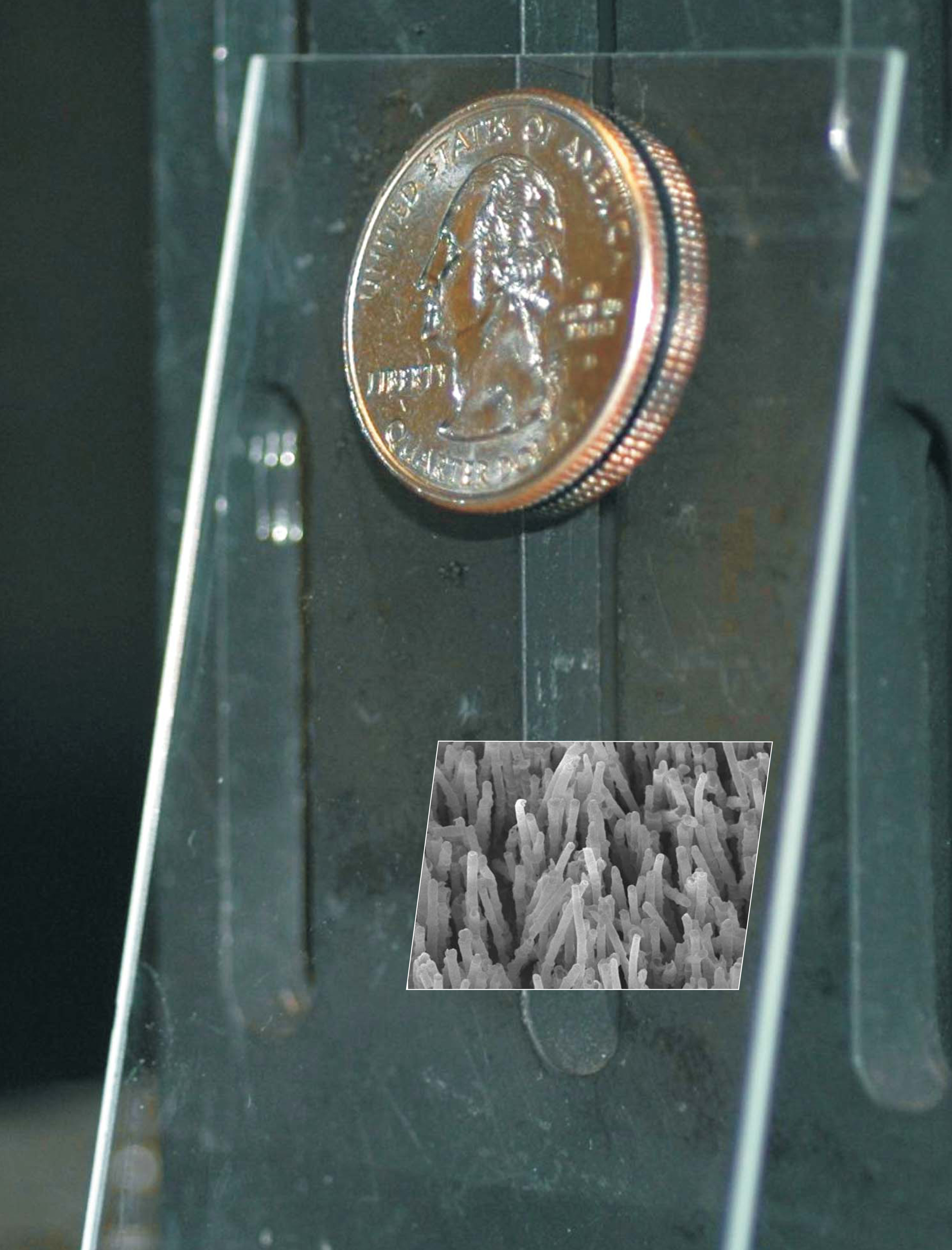High-friction microfibers
DOI: 10.1063/1.2387102
No adhesive is holding up this quarter. Instead, it is staying on the inclined glass plate because it has been coated with a high-friction array of microfibers. Taking their lead from the gecko, which can climb walls and traverse ceilings thanks to millions of small hairs, or setae, on its feet, Ronald Fearing of the University of California, Berkeley, and his colleagues have created arrays of polypropylene fibers with lengths of about 20 µm and diameters between 0.6 and 5.0 µm. The individual fibers can flex, which allows them to make better contact with a surface than a flat polypropylene film does. As a result, the fiber arrays, like the one in the scanning electron micrograph, have a coefficient of friction more than an order of magnitude larger than bulk polypropylene’s and comparable to that of tire rubber. But unlike many other high-friction materials, the fiber arrays demonstrate no measurable adhesion on smooth surfaces. (C. Majidi et al., Phys. Rev. Lett. 97 , 076103, 2006 http://dx.doi.org/10.1103/PhysRevLett.97.076103
To submit candidate images for Back Scatter, visit http://www.physicstoday.org/backscatter.html

Photo courtesy of the Fearing Group, UC Berkeley.





